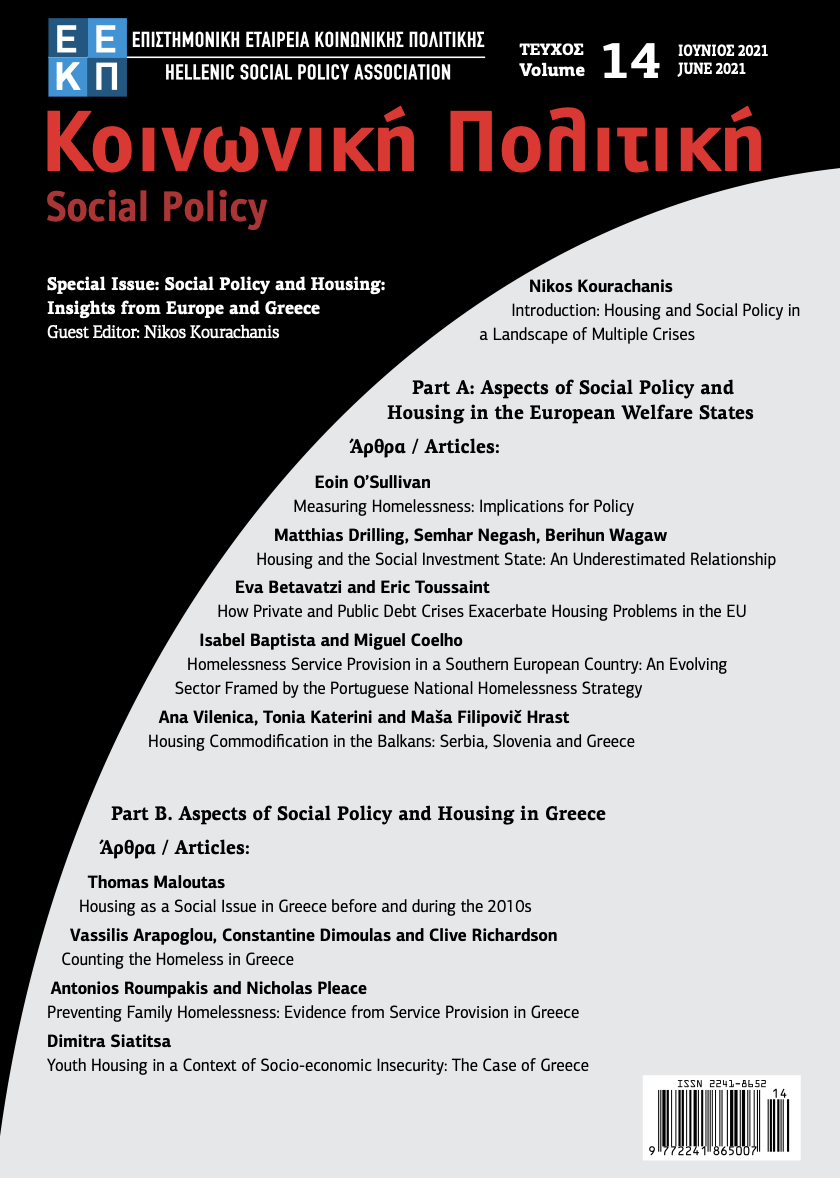Housing Commodification in the Balkans: Serbia, Slovenia and Greece
Περίληψη
In Balkans region, uneven development under global capitalism has led to significant differences in housing commodification patterns, related (social and housing) policy and associated inequalities. In this article we describe commodification patterns in Slovenia, Serbia and Greece by considering the diversity existing in the semiperiphery. We do this by comparing processes of privatisation of housing, development of the rental sector, strategies to homeownership and legal frameworks of protection of property and housing rights. We find some similarities in specific individual and familial commodification patterns and also pronounced inequalities but also semiperiphery diversity, which has been produced and maintained by the presence (or absence) of policies and state care provided for certain vulnerable groups. These diverse aspects arise from specific local, regional and global histories of housing struggles that mean the responses to them have varied. In this research, we show that Balkans semiperipheral territories must not be regarded as a passive background but as a landscape in which active agents participate in creating and transforming commodification patterns.
Λεπτομέρειες άρθρου
- Πώς να δημιουργήσετε Αναφορές
-
Vilenica, A., Katerini, T., & Filipovič Hrast, M. (2021). Housing Commodification in the Balkans: Serbia, Slovenia and Greece. Κοινωνική Πολιτική, 14, 81–98. https://doi.org/10.12681/sp.29079
- Τεύχος
- Τόμ. 14 (2021)
- Ενότητα
- Άρθρα

Αυτή η εργασία είναι αδειοδοτημένη υπό το CC Αναφορά Δημιουργού 4.0.
Οι συγγραφείς των άρθρων που δημοσιεύονται στο περιοδικό διατηρούν τα δικαιώματα πνευματικής ιδιοκτησίας επί των άρθρων τους, δίνοντας στο περιοδικό το δικαίωμα της πρώτης δημοσίευσης. Άρθρα που δημοσιεύονται στο περιοδικό διατίθενται με άδεια Creative Commons 4.0 και σύμφωνα με την άδεια μπορούν να χρησιμοποιούνται ελεύθερα, με αναφορά στο/στη συγγραφέα και στην πρώτη δημοσίευση για μη κερδοσκοπικούς σκοπούς και με δικαίωμα τροποποίησης μόνον με παρόμοια διανομή (αν αναμείξετε, τροποποιήσετε, ή δημιουργήσετε πάνω στο υλικό, πρέπει να διανείμετε τις δικές σας συνεισφορές υπό την ίδια άδεια όπως και το πρωτότυπο).



